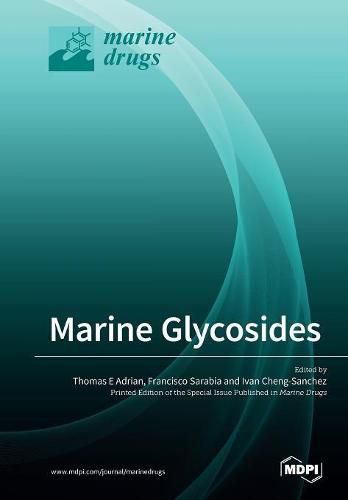Readings Newsletter
Become a Readings Member to make your shopping experience even easier.
Sign in or sign up for free!
You’re not far away from qualifying for FREE standard shipping within Australia
You’ve qualified for FREE standard shipping within Australia
The cart is loading…






This title is printed to order. This book may have been self-published. If so, we cannot guarantee the quality of the content. In the main most books will have gone through the editing process however some may not. We therefore suggest that you be aware of this before ordering this book. If in doubt check either the author or publisher’s details as we are unable to accept any returns unless they are faulty. Please contact us if you have any questions.
In recent years, there has been a steady increase in the publication of papers on the chemistry, biology, and potential clinical uses of marine glycosides. Indeed, more than half of the papers published in this field are less than a decade old. Glycosides have been isolated from species as diverse as algae, fungi, anthozoans, and echinoderms. Even fish of the genus Pardachirus produce glycosides, which they use as shark repellents.
The major interest in these compounds as potential drugs stems from their broad spectrum of biological effects. They have been shown to have antimicrobial, antifungal, anti-inflammatory, immune modulatory, and anticancer effects. The anticancer effects of marine glycosides include cell cycle suppression, the induction of apoptosis, and the inhibition of migration, invasion, and metastasis, as well as antiangiogenesis. Marine glycosides influence membrane permeability and have been shown to influence membrane transport at the molecular level through effects on transport carriers and pumps, as well as effects on ligand-gated and voltage-gated channels. Various marine glycosides have been shown to activate sphingomyelinase and ceramide synthesis, to inhibit topoisomerase activity, receptor tyrosine kinase activity, and multidrug resistance protein activity, and to antagonize eicosanoid receptors.
This Special Issue covers the entire scope of marine organism-derived glycosides that are of potential value as pharmaceutical agents or leads. These include, but are not limited to, tetracyclic triterpene glycosides, other triterpene glycosides, steroid glycosides, and glycosides of non-isoprenoid aglycones.
$9.00 standard shipping within Australia
FREE standard shipping within Australia for orders over $100.00
Express & International shipping calculated at checkout
This title is printed to order. This book may have been self-published. If so, we cannot guarantee the quality of the content. In the main most books will have gone through the editing process however some may not. We therefore suggest that you be aware of this before ordering this book. If in doubt check either the author or publisher’s details as we are unable to accept any returns unless they are faulty. Please contact us if you have any questions.
In recent years, there has been a steady increase in the publication of papers on the chemistry, biology, and potential clinical uses of marine glycosides. Indeed, more than half of the papers published in this field are less than a decade old. Glycosides have been isolated from species as diverse as algae, fungi, anthozoans, and echinoderms. Even fish of the genus Pardachirus produce glycosides, which they use as shark repellents.
The major interest in these compounds as potential drugs stems from their broad spectrum of biological effects. They have been shown to have antimicrobial, antifungal, anti-inflammatory, immune modulatory, and anticancer effects. The anticancer effects of marine glycosides include cell cycle suppression, the induction of apoptosis, and the inhibition of migration, invasion, and metastasis, as well as antiangiogenesis. Marine glycosides influence membrane permeability and have been shown to influence membrane transport at the molecular level through effects on transport carriers and pumps, as well as effects on ligand-gated and voltage-gated channels. Various marine glycosides have been shown to activate sphingomyelinase and ceramide synthesis, to inhibit topoisomerase activity, receptor tyrosine kinase activity, and multidrug resistance protein activity, and to antagonize eicosanoid receptors.
This Special Issue covers the entire scope of marine organism-derived glycosides that are of potential value as pharmaceutical agents or leads. These include, but are not limited to, tetracyclic triterpene glycosides, other triterpene glycosides, steroid glycosides, and glycosides of non-isoprenoid aglycones.